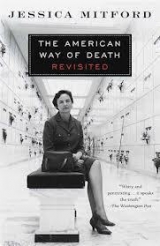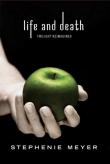
Текст книги "The American Way of Death Revisited"
Автор книги: Jessica Mitford
сообщить о нарушении
Текущая страница: 4 (всего у книги 23 страниц)
I tried two more funeral establishments and was told substantially the same thing: cremation of an uncoffined body is prohibited under California law. This was said, in all three cases, with such a ring of conviction that I began to doubt the evidence before my eyes in the State code. I reread the sections on cremation, on health requirements; finally I read the whole thing from cover to cover. Finding nothing, I checked with an officer of the Board of Health, who told me there is no law in California requiring that a coffin be used when a body is cremated. He added that indigents are cremated by some county welfare agencies without benefit of coffin.
It was just this sort of tactic described above that moved the FTC to rule in 1984 that morticians may no longer lie to the public. Anecdotal reports, however, indicate that honesty is still an elusive quality in the trade. One family that wanted to carry the ashes to the cemetery for burial was told, “You used to be able to do that. But it’s against the law now.”
Cemetery salesmen are also prone to confuse fact with fiction to their own advantage in discussing the law. Cemeteries derive a substantial income from the sale of “vaults.” The vault, a cement enclosure for the casket, is not only a moneymaker; it facilitates upkeep of the cemetery by preventing the eventual subsidence of the grave as the casket disintegrates. In response to my inquiry, a cemetery salesman (identified on his card as a “Memorial Counselor”) called at my house to sell me what he was pleased to call a “pre-need memorial estate,” in other words, a grave for future occupancy. After he quoted the prices of the various graves, the salesman explained that a minimum of $520 must be added for a vault, which, he said, is “required by law.”
“Why is it required by law?”
“To prevent the ground from caving in.”
“But suppose I should be buried in one of those Eternal caskets made of solid bronze?”
“Those things are not as solid as they look. You’d be surprised how soon they fall apart.”
“Are you sureit is required by law?”
“I’ve been in this business fifteen years; I should know.”
“Then would you be willing to sign this?” (I had been writing on a sheet of paper, “California state law requires a vault for ground burial.”)
The Memorial Counselor gathered up his color photographs of memorial estates and walked out of the house.
The fifth unusual factor present in the funeral transaction is the availability to the buyer of relatively large sums of cash. The family accustomed to buying every major item on time—car, television set, furniture—and spending to the limit of the weekly paycheck, suddenly finds itself in possession of insurance funds and death-benefit payments, often from a number of sources. It is usually unnecessary for the undertaker to resort to crude means to ascertain the extent of insurance coverage; a few simple and perfectly natural questions put to the family while he is completing the vital statistics forms will serve to elicit all he needs to know. For example, “Occupation of the deceased?” “Shall we bill the insurance company directly?”
The undertaker knows, better than a schoolboy knows the standings of the major-league baseball teams, the death-benefit payments of every trade union in the community, the Social Security and workmen’s compensation scale of death benefits: Social Security payment, $255; if the deceased was a veteran, $300 more and free burial in a national cemetery; an additional funeral allowance of up to $5,000 under some state workers’ compensation laws if the death was occupationally connected; and so on and so on.
The undertaker has all the information he needs to proceed with the sale. The widow, for the first time in possession of a large amount of ready cash, is likely to welcome his suggestions. He is, after all, the expert, the one who knows how these things should be arranged, who will steer her through the unfamiliar routines and ceremonies ahead, who will see that all goes as it should.
At the lowest end of the scale is the old-age pensioner, most of whose savings have long since been spent. He is among the poorest of the poor. Nevertheless, most state and county welfare agencies permit him to have up to $2,500 in cash; in some states he may own a modest home as well, without jeopardizing his pension. The funeral director knows that under the law of virtually every state, the funeral bill is entitled to preference in payment as the first charge against the estate. There is every likelihood that the poor old chap will be sent out in high style unless his widow is a very, very cool customer indeed.
The situation that generally obtains in the funeral transaction was summed up by former Surrogate Court Judge Fowler of New York in passing upon the reasonableness of a bill which had come before him: “One of the practical difficulties in such proceedings is that contracts for funerals are ordinarily made by persons differently situated. On the one side is generally a person greatly agitated or overwhelmed by vain regrets or deep sorrow, and on the other side persons whose business it is to minister to the dead for profit. One side is, therefore, often unbusiness-like, vague and forgetful, while the other is ordinarily alert, knowing and careful.”
There are people, however, who know their own minds perfectly well and who approach the purchase of a funeral much as they would any other transaction. They are, by the nature of things, very much in the minority. Most frequently they are not in the immediate family of the deceased but are friends or representatives of the family. Their experiences are interesting because to some extent they throw into relief the irrational quality of the funeral transaction.
In 1961 Mr. Rufus Rhoades, a retired manufacturer of San Rafael, California, was charged with arranging for the cremation of a ninety-two-year-old friend who died in a rest home. He telephoned the crematorium and was quoted the price of $75 for cremation, plus $15 for shipping the ashes to Santa Monica, where his friend’s family had cemetery space. He suggested hiring an ambulance to pick up the body, but this idea was quickly vetoed by the crematorium. He was told that he would have to deal through an undertaker, that the body could not be touched by anyone but a licensed funeral director, that a “container” would have to be provided. This he was unaware of; and no wonder, for these were “regulations” of the crematorium, not requirements of California law.
Mr. Rhoades looked in the San Rafael telephone directory and found five funeral establishments listed. He picked one at random, called, and was told that under no circumstances could price be discussed over the telephone, as it was “too private a matter”; that he should come down to the funeral home. There he found that the cheapest price, including “a low-priced casket and the complete services,” was $480. Mr. Rhoades protested that he did not want the complete services, that there was to be no embalming, that he did not want to see the coffin. He merely wanted the body removed from the rest home and taken to the crematorium, some five miles away. Balking at the $480, Mr. Rhoades returned home and telephoned the other four funeral establishments. The lowest quotation he could obtain was $250.
Not unnaturally, Mr. Rhoades felt that he had paid a fee of $50 a mile to have his friend’s body moved from the rest home to the crematorium. The undertaker no doubt felt, for his part, that he had furnished a service at well below his “break-even” point, or, in his own terminology, “below the cost at which we are fully compensated.” [3]3
Current crematory charges run from $200 to $350. In the Santa Rosa area today, Mr. Rhoades would have to pay $1,000 or more to move his friend’s body from the rest home to the crematory.
[Закрыть]
The point of view of the funeral director must here be explored. In 1962 I talked with Mr. Robert MacNeur, owner of a Grant Miller Mortuary, the largest funeral establishment in the Oakland area, with a volume of one thousand funerals a year. Their cheapest offering at the time was the standard service with redwood casket, at $485. “My firm has never knowingly subjected a person to financial hardship,” Mr. MacNeur declared. “We will render a complete funeral service for nothing if the circumstances warrant it. The service is just the same at no charge as it is for a $1,000 funeral.” Mr. MacNeur produced a copy of the “Grant Miller Co-operative Plan,” in which this philosophy was spelled out.
If a family finds the First Standard Complete Funeral Arrangement including the finer type redwood casket at $495 to be beyond their present means or wishes, Grant Miller Mortuaries stand ready to reduce costs with the following co-operative plan chart, rather than use one or a series of cheap or inferior caskets.
There followed a descending price scale, culminating in “$0 for persons in Distress Circumstances.”
A recent inquiry as to the availability of the plan produced a puzzled response: “We have no such plan, never heard of it.” The redwood box, which many today would find attractive, is available now only as a “rental unit,” at $795 for one to two days’ occupancy. Today’s low-cost receptacle is a pine box, listed on the Grant Miller casket price list at $2,425, which brings the minimum cost of a Grant Miller funeral to $3,420.
Service Corporation International (see chapter 16, “A Global Village of the Dead”) has a “no-walk” policy and will do “whatever is necessary” to keep the family from going to a competitor, according to one disaffected employee. But trying to find out what kind of discount is offered and who might qualify is as difficult today as it was with Grant Miller thirty years ago. The rare customer who has the wit and gumption need only stand up and head for the door until the price has dropped to an acceptable level.
The guiding rule in funeral pricing appears to be “from each according to his means,” regardless of the actual wishes of the family. A funeral director in San Francisco says, “If a person drives a Cadillac, why should he have a Pontiac funeral?” The Cadillac symbol figures prominently in the mortician’s thinking. This kind of reasoning is peculiar to the funeral industry. A person can drive up to an expensive restaurant in a Cadillac and can order, rather than the $40 dinner, a $2 cup of tea and he will be served. It is unlikely that the proprietor will point to his elegant furnishings and staff and demand that the Cadillac owner order something more commensurate with his ability to pay so as to help defray the overhead of the restaurant.
There is, however, one major difference between the restaurant transaction and the funeral transaction. It is clear that while the Cadillac owner may return to the restaurant tomorrow with a party of six and order $40 dinners all around, this will not be true of his dealings with the undertaker. In the funeral business it’s strictly one to a customer. Very likely many a funeral director has echoed with heartfelt sincerity the patriotic sentiments of Nathan Hale: “I only regret that I have but one life to lose for my country.” But if the undertaker fails to move in and strike while the iron is hot, the opportunity is literally lost and gone forever. (The only exception to this is noted by the Clark Grave Vault people, who in their advertisements advance the startling thought: “DISINTERMENTS—RARE BUT REWARDING. It needn’t be a problem. It can lead to repeat business….”)
The funeral industry faces a unique economic situation in that its market is fixed, or inelastic, which leads to practices such as those deplored by Emily Post, that famed arbiter of taste and custom, in the first edition of Etiquette, published in 1923:
Whether the temptation of “good business” (on the part of the funeral director) gradually undermines his character… knowing as he does that bereaved families ask no questions… or whether his profession is merely devoid of taste, he will, if not checked, bring the most ornate and expensive casket in his establishment; he will perform every rite that his professional ingenuity for expenditure can devise; he will employ every attendant he has; he will order vehicles numerous enough for the cortege of a President; he will even, if thrown in contact with a bewildered chief-mourner, secure a pledge for the erection of an elaborate mausoleum.
Evidently, Mrs. Post got a reaction from the undertakers, for in the 1942 edition of Etiquetteshe prefaced her remarks about funerals with this statement: “Because of the criticism of a certain not admirable type of funeral director in the earlier editions of this book, it must at once be said that this was not meant to apply to any of the directors of high reputation, who are consciously considerate not only of the feelings of the family but also of their pocketbooks.” However, she then goes on not only to repeat the offending paragraph but to strengthen it: “The wrong type of director will refuse to give an itemized list of costs, but will, instead, do his best to hypnotize the family into believing that the more expensive the casket, the more elaborate the preparations, the greater the love and honor shown the deceased.” In a later edition, revised in 1955, the offending passage is, without explanation, deleted in its entirety.
4. THE ARTIFACTS
Men have been most phantasticall in the singular contrivances of their corporal dissolution….
—SIR THOMAS BROWNE, Urne-Buriall
“The No. 280 reflects character and station in life. It is superb in styling and provides a formal reflection of successful living.” This is quoted from the catalogue of Practical Burial Footware of Columbus, Ohio, and refers to the Fit-a-Fut Oxford, which comes in patent, calf, tan, or oxblood with lace or goring back. The same firm carries the Ko-Zee, with its “soft, cushioned soles and warm, luxurious slipper comfort, but true shoe smartness.” Just what practical use is made of this footwear is spelled out. Burial footwear demonstrates “consideration and thoughtfulness for the departed.” The closed portion of the casket is opened for the family, who on looking see that “the ensemble is complete although not showing. You will gain their complete confidence and good will.” The women’s lingerie department of Practical Burial Footwear supplies a deluxe package, in black patent box with gold-embossed inscription, of “pantee, vestee,” and nylon hose, “strikingly smart—ultimate in distinction.” Also for the ladies are custom burial gowns, bootees, stole, and bra “for post mortem form restoration,” offered by Lipari Gowns of Johnstown, Pennsylvania.
Florence Gowns of Cleveland, Ohio, exhibited their line of “streetwear type garments and negligees,” together with something new, a line of “hostess gowns and brunch coats,” at a convention of the National Funeral Directors Association. (However, the devotional set exhibit at the same meeting, put on by Kelco Supplies of Minneapolis, while it included “The Last Supper,” failed to come through with a “Last Brunch.”)
Casket styles range from classic (that is, the “urn theme”) to Colonial to French provincial to futuristic—the “Transition” casket, styled for the future—surely, something here to please everybody. The patriotic theme comes through very strong, finding its most eloquent expression in the Batesville Casket Company’s “Valley Forge,” designed to reflect the rugged, strong, soldierlike qualities associated with that historic theme…. “Its charm lies in the warm beauty of the natural grain and finish of finest maple hardwoods. A casket designed indeed for a soldier—one that symbolizes the solid, dependable, courageous American ideals so bravely tested at Valley Forge.” For all its soldierlike qualities, it looks most comfortable, with its nice beige linen pillow and sheets. On the wall behind it hangs a portrait of George Washington, who is looking, as usual, rather displeased.
For the less rugged, the bon vivant who dreams of rubbing shoulders with the international smart set, the gay dog who would risk all on the turn of a card, there is the “Monaco,” a Duraseal metal unit “with Sea Mist Polished Finish, interior richly lined in 600 Aqua Supreme velvet, magnificently quilted and shirred, with matching jumbo bolster and coverlet.” Set against a romantic background depicting a brilliant Riviera sky, its allure heightened by suggestions of tropical ferns and a golden harp, this model can be had for not much more than a first-class airfare to Monte Carlo.
And for the homebody who is neither rugged nor daring, but is interested in solid comfort, medium-priced metal caskets are now equipped with the “Beautyrama Adjustable Soft-Foam Bed. Quality mattress fabric is used and height and adjustment is accomplished by patented means which eliminate cranking. Modified during a year of product development, the bed is soft and buoyant, but will hold firm without slipping.”
Well, there is a great deal more to it. The observer, confronted for the first time by the treasures and artifacts of this unfamiliar world, may well feel something akin to the astonishment of Bernal Díaz del Castillo at his first glimpse of the hitherto undiscovered court of Montezuma: “We were amazed,” he declared, “and some of the soldiers even asked whether the things we saw were not a dream.”
And not to be outdone in trendiness, Doric offers “a feminine alternative in burial vaults… products with soft rose and white exterior finishes in a range of prices to suit every family’s needs.” Top of the line is the Rose Patrician, with “all matching carapace with a formed rose emblem and nameplate.”
Then there is Brocatelle, one of the Batesville Casket Company’s decorator fabrics, “hand-loomed in the traditional European manner, custom designed, typical of the rich heavy-figured fabrics used by royalty during the seventeenth, eighteenth and nineteenth centuries. These fabrics are color oriented with sculptured panels of complementary hues, an interpretation of the finest art and sculpture, usually found only in the world’s leading decorator houses.”
The burial vault is a relative newcomer in funeral wares. As late as 1915, it was used in only 5 to 10 percent of all funerals—a far cry from today’s proud slogan of a leading vault manufacturer, “A Wilbert Burial Vault Every Minute” (based, a footnote tells us, on an eight-hour workday). Since the word “vault” may connote to the uninitiated a burial chamber, a word of explanation is in order. The vault we are describing here is designed as an outer receptacle to protect the casket and its contents from the elements during their eternal sojourn in the grave. Vaults are made of a variety of materials; they may be of concrete, pre-asphalt-lined; of aluminum; of a copper, asphalt, and concrete mixture; of fiberglass. In any case, a good vault is a “symbolic expression of affection.” They are getting more beautiful by the year, may be had in a variety of colors including polished stripes, and are frequently decorated with all sorts of lovely things—foreverness symbols like trees of life or setting suns—leading one to speculate as to whether the time may not be ripe for the introduction of a sur– or super– or supra-vault, and so on and on, like those little wooden eggs-within-eggs we used to find in our Christmas stockings.
I happened to have had a bracing confrontation with a vault salesman. Vidalia, Georgia—a very small town south of Savannah—is the home of the Ohoopee Public Library which was having a symposium on death—very big in recent years at colleges, library associations, and the like.
The death meetings were scheduled on successive Tuesdays, to be addressed by ministers on religious aspects, philosophers, etc…. and I was the leadoff speaker on the death industries. Brought in, I suppose, as a bit of comic relief.
But then the American Legion attacked. They blasted the Ohoopee Public Library for giving a platform to a well-known subversive. And they sent copies of all the old House Un-American Activities Committee reports to the newspapers. So the newspapers, even in far-off Savannah, sprang into life and carried the releases.
The librarians fought back. “Everybody can have his or her say at the Ohoopee Public Library,” they said. They also had the clever idea of sending special invitations with free tickets to all the funeral directors and associated industries for miles around… underlining the free-speech message and urging them to come.
As a result of this totally unexpected publicity, which blanketed the area, the lecture had to be moved from a small meeting hall to the high school auditorium, which was absolutely packed. The chairman led off, repeating the free-speech stand of the library and asking, “Are there any members of the funeral profession here?” Upon which, twelve black suits stood up, all in a row, and then sat down.
I gave my talk, which seemed to be well received because most people in Vidalia as elsewhere have at one time or another suffered from the machinations of the funeral industry. When the question period came, I asked first whether there were any questions from the funeral contingent. A black suit rose up and he said, “I am a vault man. I sell vaults. I listened to Mrs. Mitford’s speech and she never said that when Jesus Christ our Lord was crucified, a rich man gave him his vault.” And then he sat down. I replied that since I spend a lot of time in motels where the only reading matter supplied was a Bible, I was indeed familiar with the story of Joseph of Arimathea and his gift to Jesus of his vault. But if you read further, it seems he didn’t stay there all that long. I mean he was up and out in three days.
At this point the black suits rose up, all twelve of them, and walked out. I was expecting people to follow because we were, after all, in the Bible Belt. Deep Bible Belt in Vidalia, Georgia. But rather to my pleasure, not a soul stirred. They were all keen to discuss their mother’s funeral.
Cemeteries now compete with the funeral directors for the lucrative vault business. Most require the use of vaults in all burials for the ostensible reason that the vault prevents the caving in of the grave due to the eventual disintegration of the casket. The selling point made to the customer is, of course, the eternal preservation of the dead. It seems that the Midwest is a particularly fruitful territory for the sale of metal vaults. “Must be the psychological reason brought about by thoughts of extreme heat and cold, stormy weather, snow and frozen ground,” muses Mortuary Management.
An appropriate showcase setting for all these treasures assumes a special importance. Gone forever are the simple storefront undertaking establishments of earlier days. They have been replaced by elaborate structures in the style of English country houses, French provincial châteaux, Spanish missions, split-level suburban executive mansions, or Byzantine mosques—frequently, in a freewheeling mixture of all these. A Gothic chapel may be carpeted with the latest in wall-to-wall, two-inch-thick, extra-pile Acrilan, and Persian rugs laid on top of this; its bronze-girt door may open onto an authentically furnished Victorian drawing room in one corner of which is a chrome-and-tile coffee bar. The slumber rooms in the same building may stress the light and airy Swedish modern motif.
The funeral home “chapel” has begun to assume more and more importance as the focal point of the establishment. In fact, many now call themselves “chapels.” The nomenclature has gradually changed. From “undertaker” to “funeral parlor” to “funeral home” to “chapel” has been the linguistic progression; “chapel” has the additional advantage of circumventing the word “funeral.” Chapel of the Chimes, Chapel of Memories, Little Chapel of the Flowers—these are replacing Snodgrass Funeral Home. The chapel proper is a simulated place of worship. Because it has to be all things to all people, it is subject to a quick change by wheeling into place a “devotional chapel set” appropriate to the religion being catered to at the moment—a Star of David, a cross, a statue of the Virgin, and so on. Advertisements and promotional brochures generally emphasize the chapel and its features: “Enter the chapel. Note how the sun pours its diffused glory through Gothic windows, and how the blue and amber, ruby and amethyst tones of glass play smilingly on walls and ceiling …” (Chapel of the Chimes brochure).
The slumber rooms are elusively reminiscent of some other feature of American life. What familiar establishments also boast such eclecticism of design, from medieval to futuristic, combined with the most minute attention to comfort? In what category of building are you sure to find voluptuous carpeting underfoot, floor-length draw drapes, skillfully arranged concealed lighting to please the eye, temperature expertly adjusted by push button for maximum well-being—the soothing atmosphere of restful luxury pervading all? The answer was suggested by a funeral director with whom I was discussing costs. He was explaining the items that go to make up a total. “So then you’ve got a slumber room tied up for three days or more,” he said. “Right there’s a consideration: How much would it cost you to stay in a good motel for three days?”
Motels for the dead! That’s it, of course—a swimming pool and TV the only missing features.
The selection room is the portion of the mortuary where the caskets are displayed and offered for sale. It is here that all of the previous efforts of the funeral director—his advertising, his living the good life in the community, the impression he has made on the bereaved family during the arrangement conference—will be crowned with success or doomed to failure. It is here that the actual price of the funeral will be settled.
The decor and lighting of the selection room and particularly the arrangement of merchandise are matters of greatest importance, for these, as we have seen, materially condition and affect the conduct of the transaction itself. As an interior decorator writes, “Being the financial foundation of mortuary income, caution should be exercised in every detail and appointment, employing the finest selling qualities of color lighting effects, proper placement of caskets and special background features; the psychological effect producing a feeling of security and confidence that results in the sale of higher grade caskets, and the return of families for additional service when needed.”
Further on decor, one writer advises that warm colors are said to be advancingcolors; and cold colors are recedingcolors. She recommends cool backgrounds to set off the warm walnut, mahogany, copper shades of the caskets. Another prefers touches of red about the place, possibly decorative wallpaper panels, and a bone-white ceiling to give a good distribution of light. The matter of good lighting is most important because in dim light it is hard to distinguish between low-grade rayon and transparent velvet casket linings. Throughout, “color, life and light” will provide the right atmosphere for people “conditioned to modern environment.” A minimumof forty square feet of floor space is needed to display a burial casket, although if possible sixty square feet should be allowed for each unit.
We have glimpsed the chapel, the slumber rooms, the casket-selection room, all designed for public inspection and edification. We have examined some of the choice and curious artifacts and their uses. There is one door we have not yet opened, through which the public may not enter and behind which certain procedures take place—procedures indispensable to the proper utilization of the funeral director’s merchandise and premises. What goes on in that forbidden territory, and why, can only be understood in context if we “weave in the service story.”








